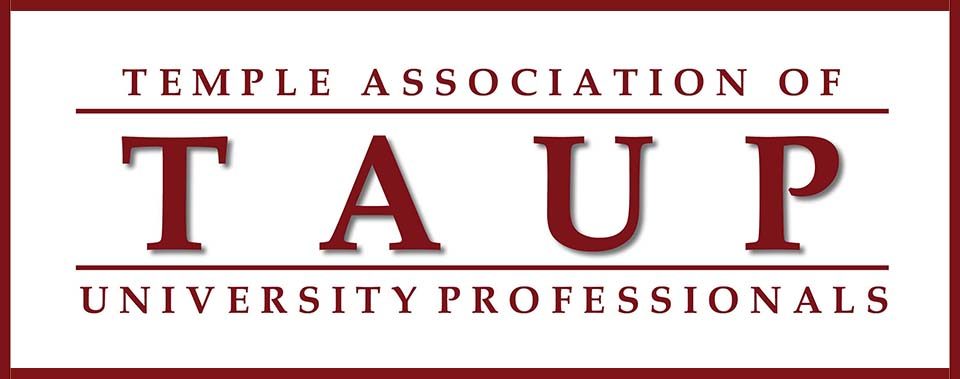Last Thursday’s negotiation session was devoted to TAUP’s responses to the proposals that the administration put on the table on August 13th.
Progress was made on a few issues:
- adding a fact-finding step in grievances
- giving the Provost’s office an option to award half-units of merit without being awarded a whole unit first in specific circumstances (e. g., for service on university committees)
- removing parts of the contract rendered obsolete by agreed-upon practices and the Janus decision.
We look forward to continuing to work with the administration to find areas of agreement.
“The Administration” is not “The University”
TAUP had to register strong objections to many of the administration’s proposals:
- to remove the rights of our members to grieve discrimination as well as health and safety concerns. The administration believes that the University’s resources and processes for investigating and addressing discrimination and health/safety concerns are sufficient . There is no reason why pursuing a grievance and utilizing these resources should be exclusive. TAUP members have the right to seek a remedy through the grievance process in addition to the administrative processes. We see no reason to remove language from the contract that would restrict a critical path of recourse that is available.
- to move Academic Professionals from our bargaining unit to another union
- to remove Program Directors and those in similar roles entirely from union representation
- to strip TAUP of its right to an on-campus office and course-releases for service to the Union, rights that have been recognized since 1976 and maintained over decades of intense bargaining
- to exclude work for TAUP as eligible for merit
- to discontinue a standard workplace practice of giving unions that represent new employees an opportunity to meet with them during or after their new hire orientation. There has been a provision for this in the TAUP contract for over a decade. It offers an opportunity to welcome new colleagues to campus, inform them of their rights under the contract and encourage them to join the union.
The administration may claim that these proposals are “aimed at clarifying the union’s independence from the university.” But there is a difference between “the administration” and “the university.” TAUP is certainly independent from the administration, but for over 45 years been we have been an essential part of Temple University. We represent nearly 3000 professionals who are central to Temple’s core missions of teaching, research, and service. Our contract sets forth the terms not only for wages and benefits but also procedures for tenure and promotion, grievances, and other processes at the heart of the work that the university does. TAUP is integral to the university. Conversely, we do not believe that there is any confusion in regard to the Union’s independence from the administration that justifies these proposals.
This is why we see them not as a way to clarify the administration’s and the union’s roles but rather as a way to make it harder for TAUP to do crucial work in representing colleagues whether at the bargaining table or away from it.
President Englert and Provost Epps phrased the matter well when they wrote that together, TAUP and the administration have been able to realize “our collective mission of providing the best possible education to our students . . .time and again for many years, and that this positive relationship should continue.” But neither that shared goal nor that relationship is well-served by these proposals. We urge the administration to reconsider.
We will continue to advocate for our vision of Temple: For example, we have proposed:
- expanding the number of course releases for service significantly so that all faculty, but especially people of color and women can be properly recognized for how much they do for Temple.
- limiting the use of student feedback forms for the purpose of promotion, reappointment and tenure.
- healthy across-the-board and merit raises
- increased job security for NTTs and adjuncts
- more tenure-track hiring
- childcare and tuition benefits at other schools
- increased summer pay
- new protections on intellectual property for course design and materials
We know that Temple can afford these proposals and can give our colleagues the work environment that they and our students deserve.
